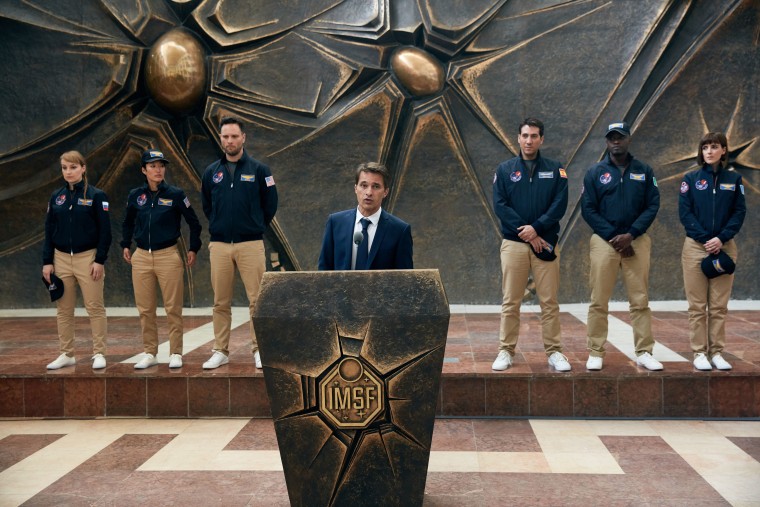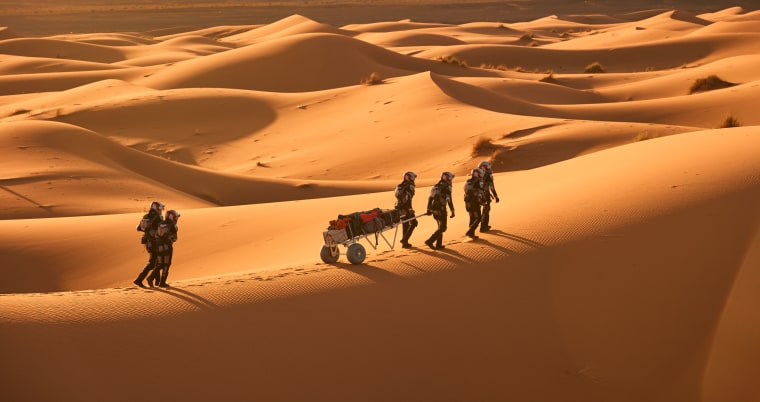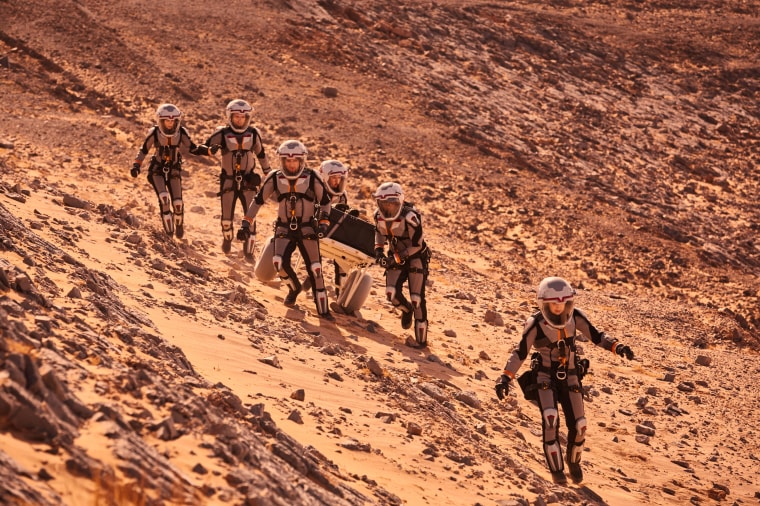Robotic spacecraft have flown by, circled, crashed into, bounced and rolled over the red surface of Mars before. But in 2033, the first human expedition will finally set foot on the sandy face of the faraway planet.
This mission, at least in National Geographic’s much anticipated docudrama “MARS” — which premieres November 14 at 9pET — is piloted by the Mexican director Everardo Gout — his 2011 debut feature film "Days of Grace" about violence and corruption in Mexico City won eight awards from the Mexican Academy of Film, and executive producers Ron Howard, Brian Grazer and Justin Wilkes.

And you the viewer are invited to join the international cast, which includes the Nigerian actor Sammi Rotibi — best known as the rebellious slave in Quentin Tarantino’s 2012 western “Django Unchained” — and the Argentinean actor Alberto Ammann — who won a Spanish Academy of Film award for Best New Actor in the 2009 prison riot film "Celda 211", as one of the navigators on a trailblazing expedition to colonize Mars.
This crew will challenge viewers to push beyond the limits of their imagination. And the docudrama aims to connect all of us with a future, idealized version of ourselves to explore a planet that humanity has never been able to call home before.
RELATED: Elon Musk Makes His Case for Colonizing Mars
“If I could talk to the first people to stand on the surface of Mars, I would ask them to remember that everything they’re about to see, they’ll be seeing for our whole species,” says Ann Druyan, creative director of NASA’s Voyager Interstellar Message Project—a time capsule of sorts that preserves a record of humanity’s culture and diversity, which was launched into space—in the first episode of the docudrama.

While many people still can’t see themselves really living on Mars, scientists and engineers are planning and working on the machinery to make human life on the red planet possible. And in this sense, Mars has evolved from a science fiction fantasy to a serious international mission that hopes to keep humanity alive.
“I think it’s important for us to try to get to a self-sustaining situation on Mars as soon as possible,” says Elon Musk, CEO and lead designer of SpaceX—a rocket and spacecraft manufacturer, in episode one. “Because either we’re going to become a multi-planet species and a space-growing civilization, or we’re going to be stuck on one planet until one eventual extinction event.”
RELATED: Mock Mars Crew Returns to Civilization After Year in Isolation
Scientists sometimes describe Mars and Earth as “sister planets.” A young Mars had rivers, lakes, and even an ocean, says Dr. Robert Zubrin, president of the Mars Society, in episode one. And this geographic comparison not only transforms Mars into a destination where people can project their dreams and stories about the future, but the red planet also becomes a mirror that could reflect humanity’s possible destruction—if life on Mars existed in the past, then what happened to it?

This fear of destruction is a popular theme in science fiction, including acclaimed Mexican director Guillermo del Toro’s 2013 movie “Pacific Rim”, where colossal Godzilla-like aliens attack Earth through a portal at the bottom of the Pacific Ocean. Viewers could easily re-imagine these monsters as hurricanes, typhoons, earthquakes and other natural disasters that threaten to wipe out humanity.
And just like in the darkest of science fiction horror stories, people are looking up to the planets and stars for an elevated perspective that could unite humanity and find a global solution for climate change and other possible life-ending events.
“We need to go to Mars because it protects us from extinction,” says Andy Weir, author of the bestselling science fiction novel “The Martian” — recently made into a movie — in episode one.
“There’s all sorts of things that could kill all humans on the planet," Weir concluded. "But once humans are on two different planets, the odds of extinction drop nearly to zero.”